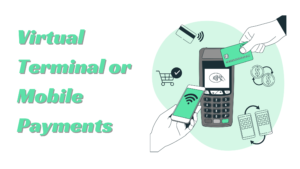Blockchain Technology and Its Potential Impact on Tax Relief Programs
Blockchain technology has revolutionized numerous industries, offering a new level of security, transparency, and efficiency. Initially developed as the foundation of cryptocurrencies like Bitcoin, blockchain has since found its way into finance and healthcare sectors. One area where blockchain holds significant promise is tax administration, particularly in tax relief programs. As governments and financial institutions seek innovative solutions to streamline tax processes and combat fraud, blockchain emerges as a powerful tool. Follow up with Tax Law Advocates to understand how blockchain technology can potentially reshape tax relief initiatives like the IRS Fresh Start Program.
The Role of Blockchain in Financial Transactions
The decentralized ledger system of Blockchain operates to create transaction records on multiple interconnected computers. Blockchain operates without centralized banks or tax agencies, thus eliminating intermediary entities to minimize fraud and manipulation risks. Time-stamped encryption protects every blockchain transaction, making it an unalterable, permanent record that cannot be modified or deleted.
The level of transparency and security needed for tax relief programs must be high. Real-time financial transaction monitoring through blockchain allows tax authorities to verify that taxpayers follow their relief agreement conditions. The system would operate more efficiently while reducing errors and eliminating tax evasion because of this implementation. Implementing automated smart contracts would enable tax relief eligibility management through automated checks that eliminate the necessity of extensive paperwork and human oversight.
Enhancing Taxpayer Trust and Compliance
Tax administration faces a primary challenge in balancing tax compliance with preserving public confidence. Taxpayers avoid taking part in tax relief programs because they fear bureaucratic problems, system errors, and possible corruption issues. Blockchain technology creates an auditable, transparent environment for tax-related transactions, which stores permanent records accessible for verification.
Taxpayers who want tax relief programs can put their financial records onto a blockchain so tax authorities can verify their income statements, expense reports, and debt information without errors. The removal of documentation disputes would help speed up the approval process. Real-time application tracking and viewing capabilities for tax relief programs would enhance system transparency for taxpayers, thus encouraging more people to participate.
Smart Contracts and Automated Tax Relief Processing
The main strength of blockchain technology lies in its execution of smart contracts, which operate autonomously based on defined criteria. Smart contracts can automate tax relief program procedures by executing installment agreements, penalty abatements, and debt settlement processes. Taxpayers who satisfy the payment requirements trigger smart contracts to update their tax standing or modify their tax responsibilities automatically.
The automation system would save tax authorities money on administration costs and prevent delays that commonly annoy taxpayers. The existing tax relief procedures heavily depend on paperwork and manual inspection; thus, they frequently encounter human mistakes and operational inefficiencies. Brilliant contracts based on blockchain technology enable tax relief programs to handle operations faster while maintaining high accuracy, which benefits taxpayers and government agencies.
Addressing Fraud and Tax Evasion
The problem of Tax evasion results in annual government revenue loss of billions of dollars. Significant revenue losses result from people filing false taxes, reporting incorrect income, and carrying out illegal financial operations. The tamper-proof decentralized structure of blockchain provides an excellent solution to address these existing difficulties. The blockchain system enables full traceability of all recorded transactions because past changes are impossible, creating an effective barrier against tax record manipulation.
Implementing blockchain technology within tax relief programs enables governments to decrease fraudulent claim occurrences substantially. The difficulty for taxpayers to alter past transactions and hide assets would increase when they try to misrepresent their financial situations. The international tracking of economic activities across borders through blockchain technology would assist global efforts to combat tax evasion worldwide.
Conclusion
Blockchain technology enables the transformation of tax relief programs through enhanced transparency, which leads to better compliance and streamlined administrative operations. The combination of real-time transaction tracking and automated smart contracts through blockchain technology would reduce administrative inefficiencies and boost tax administration trust. Implementing blockchain technology for tax relief faces ongoing challenges, but its clear benefits make it undeniable. The future of modern tax relief programs depends on blockchain becoming an essential digital component governments are exploring for tax management solutions.

















